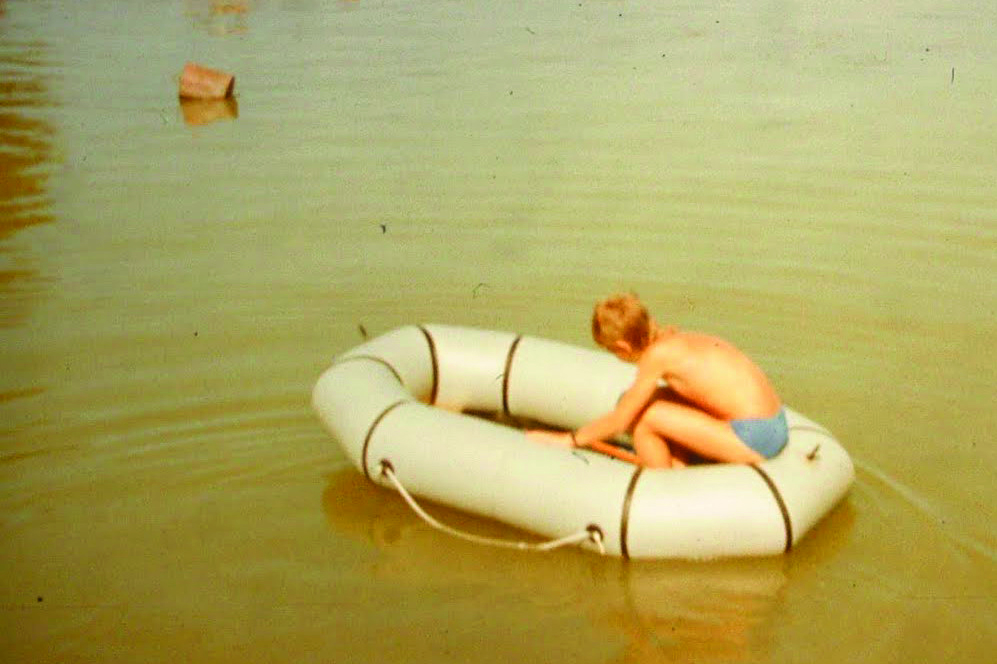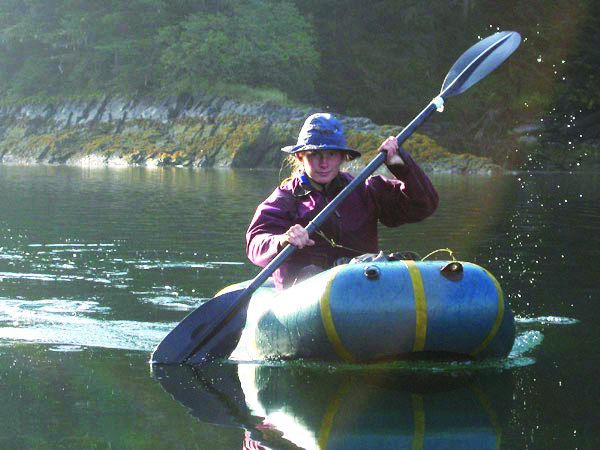The Invention Of Packrafting
Book Extract
The idea for a modern packable raft followed the invention of ‘Mackintosh’ rubberised canvas. In the 1840s Peter Halkett, an enterprising British naval officer, produced a ‘marine contrivance’ (A) designed to aid exploration of the Canadian Arctic. A century ahead of his time, his 3.4-kilo, four-chamber raft doubled as a waterproof cloak and though it failed commercially, Halkett clearly had a contemporary, ‘Backpacking Light’ mentality towards multi-functional gear.

Larger rubberised canvas vessels ensued, but portable rafts sank into a century-long dark age until surplus WW2 pilots’ survival rafts were re-purposed by adventurers. The idea of using a packable raft for river running was reborn, but it wasn’t until the 1970s when American Safety Equipment named their latest product the ‘Pack Raft’ that the activity got a name. Rubber sandwiched inside canvas now became an airtight coating on ripstop nylon or just thick vinyl. Aged 55, Dick Griffiths famously trounced much of the field with such a boat in 1982’s inaugural Alaska Wilderness Classic adventure race. A year later whitewater packrafting pioneer, Roman Dial, introduced tougher Sherpa Rafts to the Classic and wrote the first packrafting guide in 2008.
Meanwhile, behind the Iron Curtain the desire for amphibious adventures was no less strong, also using pilots’ survival rafts or East German tyre-maker Pneumant’s plywood-floored SB dinghies (Anfibio co-founder Marc Kreinacker, Hungary, 1986).

Around 2000 what became Alpacka Rafts responded to the dire needs of intrepid Alaskans (Below: Erin McKittrick, Port Fidalgo, AK, 2004). Now made in Colorado, Alpacka remains the best-known brand, introducing many ingenious, eye-catching and widely copied innovations. Kokopelli followed in 2012 with their distinctive 8-panel hulls, as did Micro Rafting Systems (MRS) from China. Today there are well over twenty brands, mostly China-sourced from inflatable-leisure product specialists like Audac Sports. Brands now seek to outdo or undercut each other, but with all the major advances probably made, it leaves only incremental improvements and diversified model ranges to attract specialised users.

Underneath, they’re all packrafts which have proved much more durable than their resemblance to short-lived pooltoys may suggest. Unlike slackrafts (p11) your TPU packraft can handle firm inflation without pinprick leaks or splits, and won’t degrade into a pile of discoloured plastic in a year or two.
At it’s heart a packraft remains as basic as a Bronze Age coracle, a do-it-all, carry-anywhere boat for whatever use you dare to put it to.